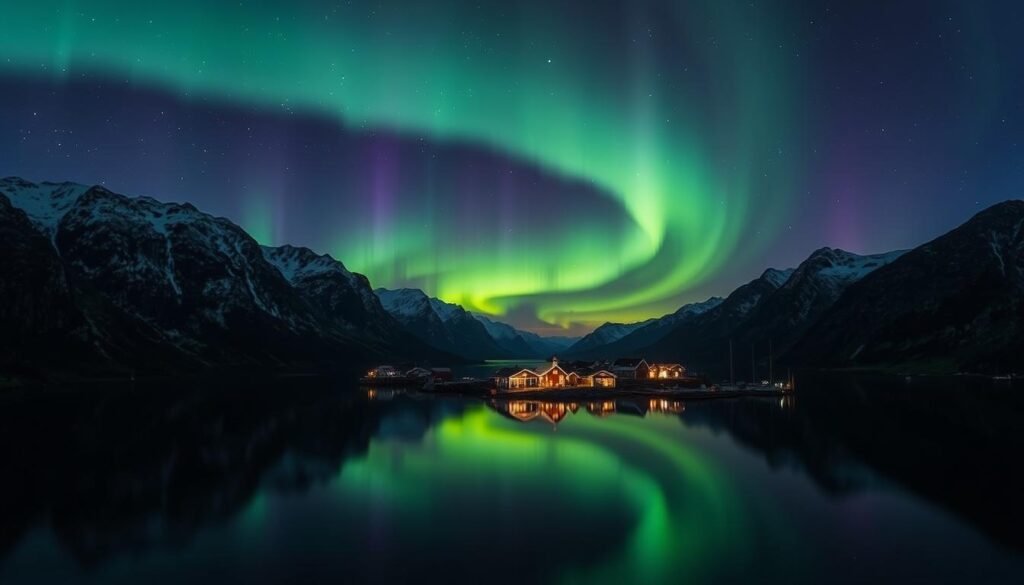Surprising fact: I learned that parts of Norway see the sun for 24 hours a day in summer, while other areas get long, dark nights ideal for chasing the northern lights.
I travel here often, and I find each season offers clear trade-offs for planning a trip. Summer brings long, mild days and open hiking routes across the western fjords.
Autumn gives vivid foliage and the first clear chances for aurora viewing. Winter delivers snow, ice hotels and peak lights viewing in the Northern Lights Belt around Tromsø and Lofoten.
Spring restores roaring waterfalls and reopens scenic roads like Trollstigen near Ålesund. I weigh weather, daylight and seasonal activities so you can match your trip with what matters most.
Key Takeaways
- Summer: long days, warm southern temps, great for fjords and hiking.
- Autumn: colorful foliage and early aurora opportunities.
- Winter: prime northern lights and winter sports in the north.
- Spring: waterfalls, blossoms, and reopening scenic routes.
- Plan by activity: pick months that match daylight and weather for your chosen pursuits.
How I decide when to visit Norway: weather, daylight, crowds, and budget
I base most decisions on how many daylight hours I’ll have and what the weather will allow.
Weather and daylight shape the trip. Summer gives the clearest, mildest days and long hours above the Arctic Circle. That makes ambitious itineraries possible and opens most hiking routes.
I check shoulder months like May–June and September–October for quieter roads and lower weekend hotel rates. These months still offer good hiking in many places and fewer crowds than high season.
Road and transport conditions vary by months. Some mountain passes close in winter and reopen in spring, so I time scenic drives like Trollstigen when they’re accessible.
I also weigh aurora odds. If northern lights are a priority, I block dates between September and March, head north, and add extra nights to improve my chances under clear skies.
- I match activities to season: hiking in summer, snow sports in winter, lights in fall/winter.
- I factor in how many days I have each year and how that affects budget and pace.
- I leave buffer time for changeable weather and lower transport frequency outside summer.
Summer in Norway (June–August): fjords, road trips, and the midnight sun
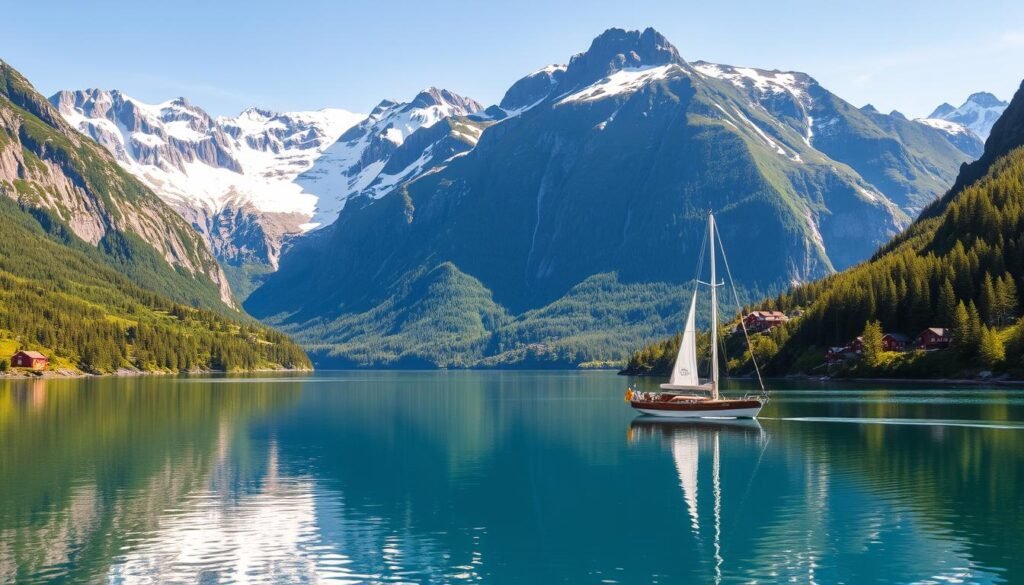
Summer opens Norway in a way that makes long road trips and late-night hikes feel effortless. June to August brings long, mild days and blue skies that suit outdoor plans across the country.
Typical weather and daylight from south to north
I expect warmer 60s–70s°F in the south and cooler low 50s°F up north. Above the Arctic Circle, the midnight sun keeps the horizon bright for hours, so packing a sleep mask helps.You can learn more about best-caribbean-islands-to-visit
Where I go and what I pack
I head for the western fjords, then push north to the Lofoten Islands and the Arctic Circle when I want endless light and dramatic peaks.
Top activities and seasonal highlights
Trails open, so I plan one long hike, a kayak trip, and a fjord cruise. Whale watching off Vesterålen is in season, and festivals — from marathons to music — fill the long evenings.
- I book huts and ferries early because demand is high.
- Fjord cruises and scenic drives are easiest now; roads and schedules are reliable.
- For planning details, I check the summer guide.
Autumn in Norway (September–October/November): golden trails and quieter trips
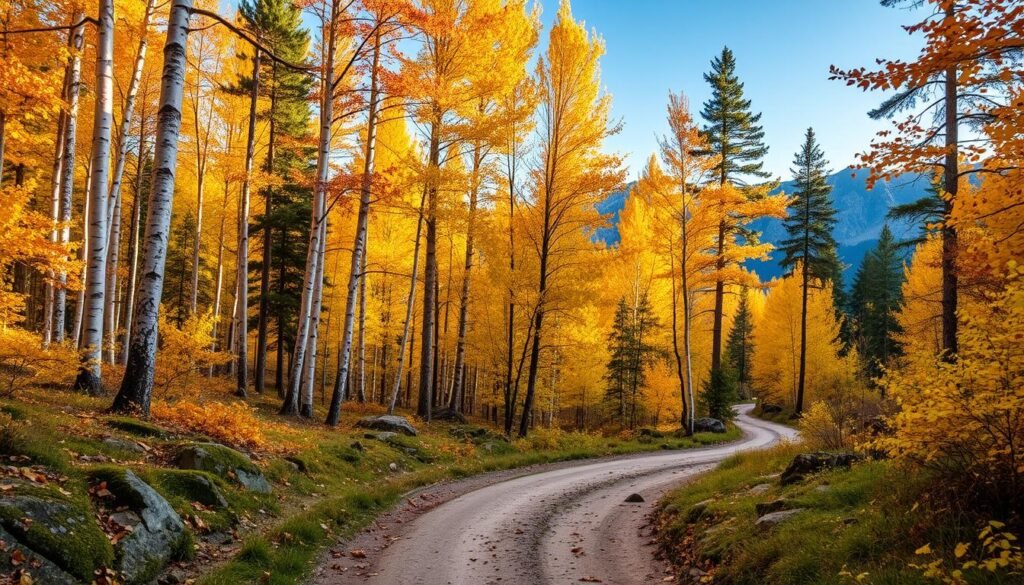
I lean into autumn’s softer light, picking routes that show off fiery slopes and let me slow down. Cooling weather brings crisp mornings and shorter days, but it also clears crowds and opens new wildlife chances along the coast.
Cooling temps, vivid foliage, and the first auroras
Oslo averages about 48°F in October, while the far north drops near 35°F. The nights lengthen, and I begin watching for the first northern lights on clear evenings.
My favorite fall hikes and viewpoints
I target September and October for Bøkeskogen’s beech glow and quieter visits to Pulpit Rock and Trolltunga. Shorter daylight means earlier starts, so I pack warm layers and waterproofs for changing trail conditions.
Where I go: rail, fjords, and wildlife north
I ride the Oslo–Bergen rail and link to fjord routes for dramatic color. Later in the months, coastal voyages north can bring whale and orca sightings and calm ports like Kirkenes.
- Tip: book flexible nights in the north to chase clear skies and lights.
- Remember: autumn is the best time visit for value, fewer crowds, and vivid photos.
Winter in Norway (November–March): northern lights and snowy adventures
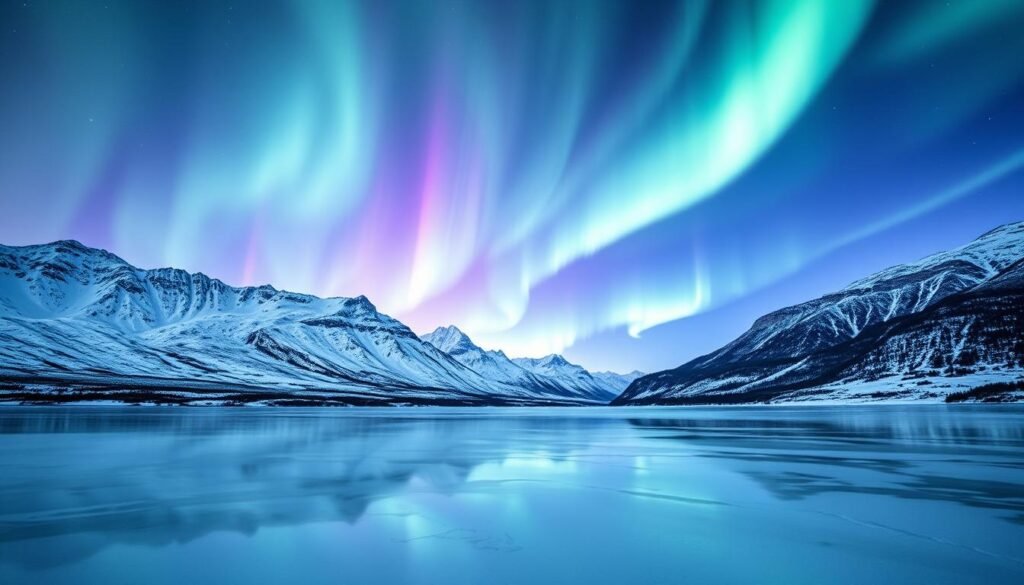
The cold months turn fjords and towns into a different country — one of blue light and crisp air. I plan winter trips around long nights and clear-sky windows for aurora watching, while also fitting in sled rides and cultural stops.
Cold, dark, and beautiful: understanding winter conditions
Winter averages hover near 25°F inland and about 35°F along the coast. Many roads remain open, but some mountain passes close for safety.You can learn more about best-time-to-visit-thailand
I build flexible days, layer clothing, and shorten driving legs when snow is heavy. That gives room for both clear-sky magic and stormy, cozy days.
Inside the Northern Lights Belt: Tromsø, Lofoten, North Cape, Kirkenes
I aim for the Northern Lights Belt (roughly 65–72°N) — Tromsø, Lofoten, the North Cape, and Kirkenes — where auroral frequency and intensity peak. Prime aurora viewing runs broadly from October through March, with the darkest nights offering the clearest displays.
Signature winter experiences and arctic journeys
Classic activities include dog-sledding, meeting reindeer herders and learning about Sami culture, snowmobiling, and sleeping in ice or snow hotels like SnowHotel Kirkenes.
Svalbard offers polar night from late October to mid-February and a deep Arctic feel. I also add Tromsø festivals — the Northern Lights Festival in January and Geilo’s Ice Music Festival in February — to mix culture with outdoor pursuits.
How I plan winter trips
- I spread nights in one northern hub to raise aurora odds and book guided chases when forecasts look promising.
- I monitor weather and road conditions and favor trains or coastal voyages when driving looks risky.
- I travel with spare camera batteries and cold-tested gear to protect batteries and lenses in low temperatures.
Spring in Norway (April–May/June): waterfalls, blossoms, and reopening roads
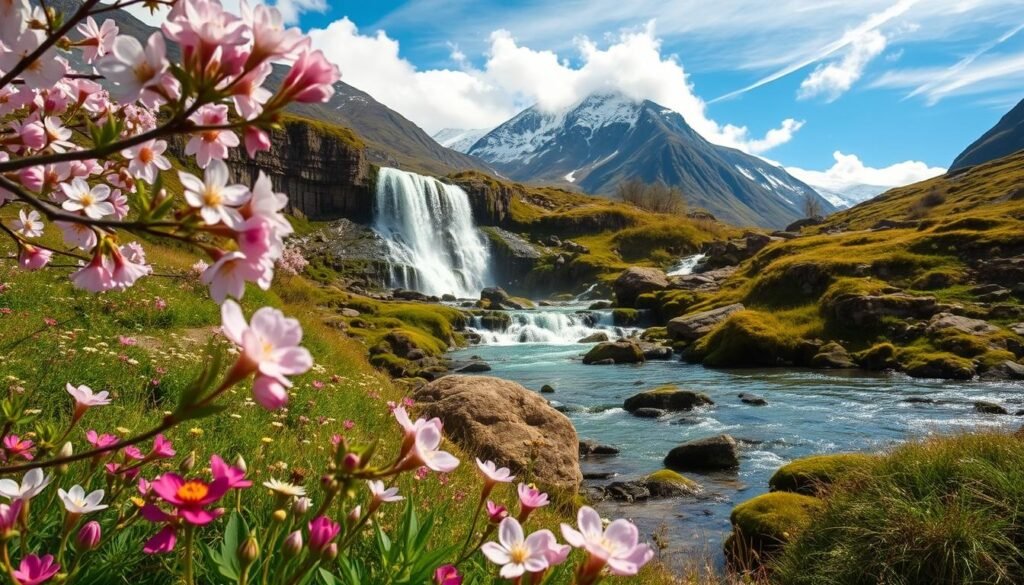
April’s thaw starts rivers running and gives fjord cliffs their loudest waterfalls.
I plan around shifting weather and longer daylight hours. Melting snow feeds powerful falls in fjord areas like Geirangerfjord. Boats and viewpoints show the Seven Sisters and Bridal Veil at full force.
Changeable weather and rising daylight hours
I pack waterproof layers and warm mid-layers for sudden showers and sunny stretches. Early April still has shorter days; by May and June the hours expand and I drive farther.
Why I love spring fjords: peak waterfalls and peaceful cruises
Shoulder months mean quieter sailings and dramatic scenery. I often upgrade a night for a fjord-view room while prices stay reasonable.
Scenic drives return: Trollstigen and coastal routes
Trollstigen and many mountain passes reopen late in spring. I choose lower trails first and add museum days in Bergen when rain arrives.
| Feature | April | May–June |
|---|---|---|
| Average Oslo temp | Near freezing | Low 50s°F |
| Road access | Partial (some passes closed) | Most scenic routes reopen |
| Crowds | Low | Moderate (shoulder season) |
For details, I also check a full timing guide before booking.You can learn more about best-time-to-visit-switzerland
best time to visit norway
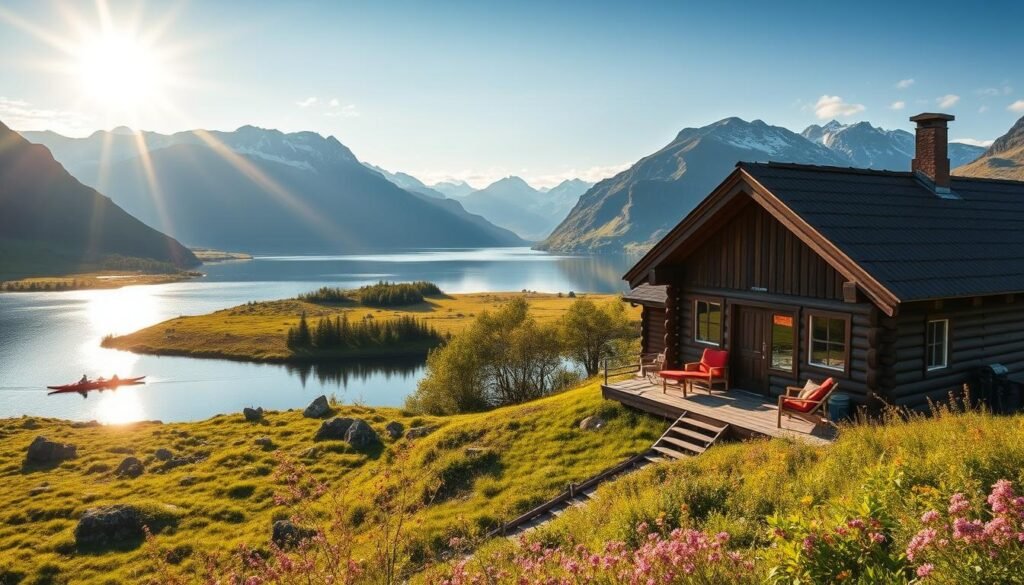
My choice of dates comes down to what I plan to do and how I handle crowds and cost.
By weather preference: If you want the warmest days and full outdoor access, pick summer for long daylight, open trails, and lively fjords. If crisp, snowy beauty and aurora chases draw you, aim for the winter months in Northern Norway when dark skies favor the northern lights.
By crowds and cost: High season brings busy ports and packed trails but steady schedules. For better value and lighter crowds, I steer toward May–June or September–October—shoulder months that balance mild weather with lower weekend hotel rates and quieter roads.
By activity
Hiking and fjord trips shine in summer; late spring pumps waterfalls and calm cruises. If aurora viewing is the goal, plan nights between October and March in the north. Short city breaks in Oslo or Bergen work well in late spring or early fall to dodge peak queues.
- I match my days available against daylight and weather so a one-week trip uses long summer hours efficiently.
- I pick late spring or early fall for fjords when photos and fewer crowds line up.
- I leave winter routes for dog-sledding, reindeer visits, and snowmobile safaris if snow is the main draw.
Chasing light: northern lights vs midnight sun
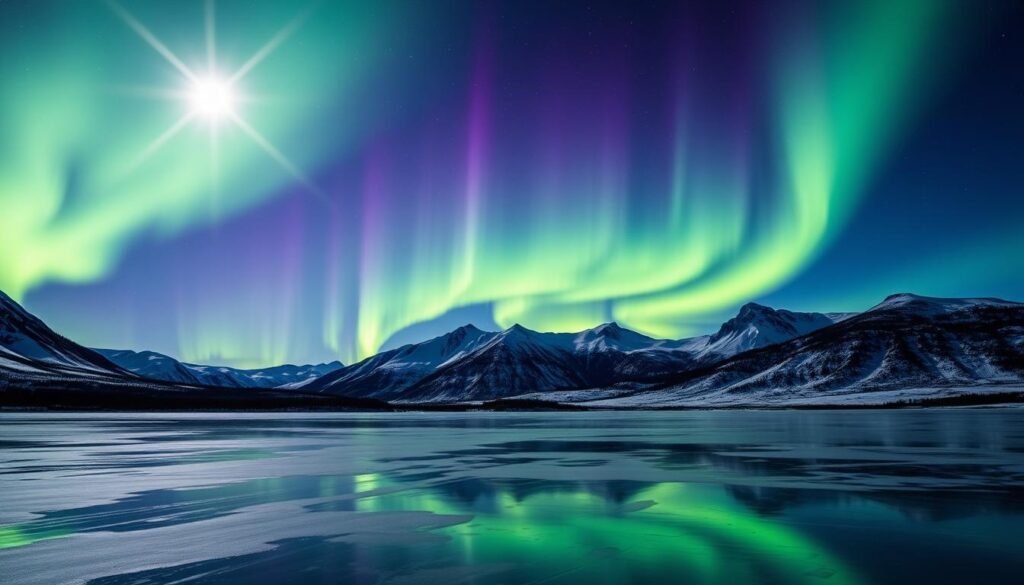
I plan trips around contrasting skies — nights lit by auroras or endless summer daylight.
When I hunt the northern lights, I go north between September and March and base myself in hubs like Tromsø or the Lofoten Islands. I book multiple nights and a guided chase so someone can drive me beyond local clouds and light glare.
I watch moon phase and Kp forecasts, dress for sub-freezing nights, and keep camera batteries warm. Clear, dark skies away from towns give the best chance to see curtains of color sweep the sky.
Experiencing the midnight sun
I schedule midnight sun trips from May through July above the Arctic Circle. Endless daylight gives me unusual hours for hiking and seaside photos at 1 a.m.
I use eye masks and a gentle routine to sleep, and I mix summer sea kayaking and whale safaris with winter dog-sledding trips under the lights. I also meet local people and learn about sami culture on both seasonal journeys.
- I treat these phenomena as complementary: one year, I chase the northern lights; another year, I linger under the midnight sun.
Cities, fjords, and coastal voyages: timing your itinerary
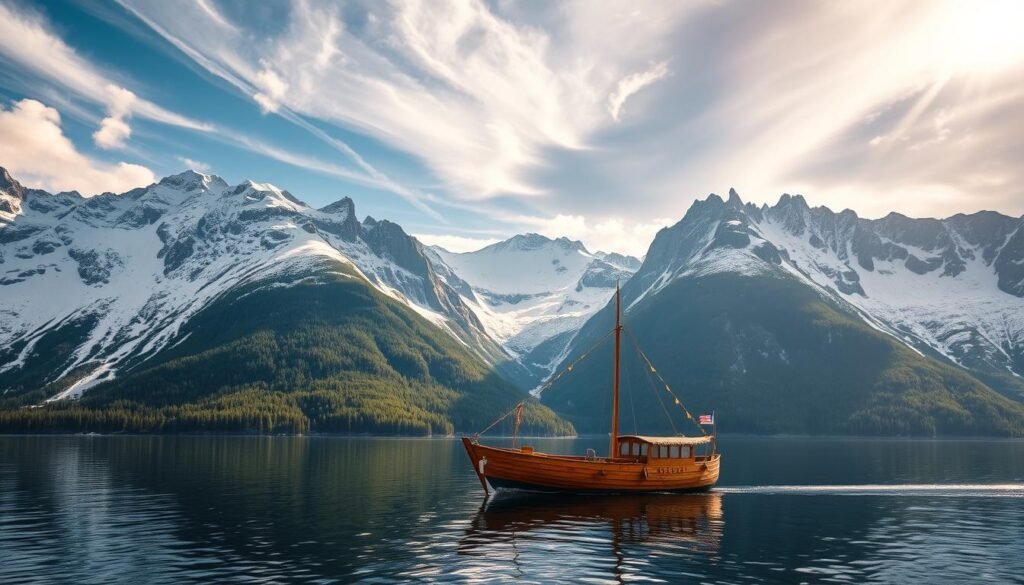
I map out city breaks and fjord legs so bad weather never ruins a whole trip. That means pairing Oslo or Bergen with a few days on the water, then adding a northern stop if lights or midnight sun matter.
Oslo city breaks
I pick late spring or early fall for Oslo. Fewer crowds mean easier access to MUNCH and the National Museum, plus long, pleasant hours for walking and dining.
Bergen and the western fjords
Bergen is a gateway for fjords year‑round. I aim summer for outdoor hikes like Fløyen and Ulriken, but I keep indoor plans for rainy windows.
Tromsø and the north
Tromsø works for winter lights and festivals, then again in summer for midnight sun activities. I split nights so I can chase clear skies or paddle under endless light.
Ålesund and Geirangerfjord
For sweeping panoramas and alpine trails, I schedule Ålesund with Geirangerfjord in summer. Clear mornings make fjord cruises and photo hours more rewarding.
Fjord cruises and coastal voyages
I favor late spring through early fall for longer daylight, smoother seas, and better photography. Winter sailings still shine for aurora and snowy ports, so I keep one cold-season option on the shelf.
| Place | Recommended months | Main draws | Booking notes |
|---|---|---|---|
| Oslo | Late spring, early fall | Museums, dining, easy walks | Book timed entries for major museums |
| Bergen & Western fjords | Summer, shoulder seasons | Hiking, fjord day trips | Reserve popular fjord cruises in advance |
| Tromsø | Winter & summer | Northern lights, midnight sun | Allow extra nights for clear-sky chases |
| Ålesund / Geirangerfjord | Summer | Panoramas, alpine trails | Plan morning viewpoints, evening cruises |
- Tip: Balance days between cities and fjords and leave buffer hours for changing weather along the coast.
- Tip: Book summer fjord cruises early and consider shoulder-season trips for fewer crowds and better rates.
Regional and multi-country ideas: Svalbard, Lofoten, and Scandinavia combos
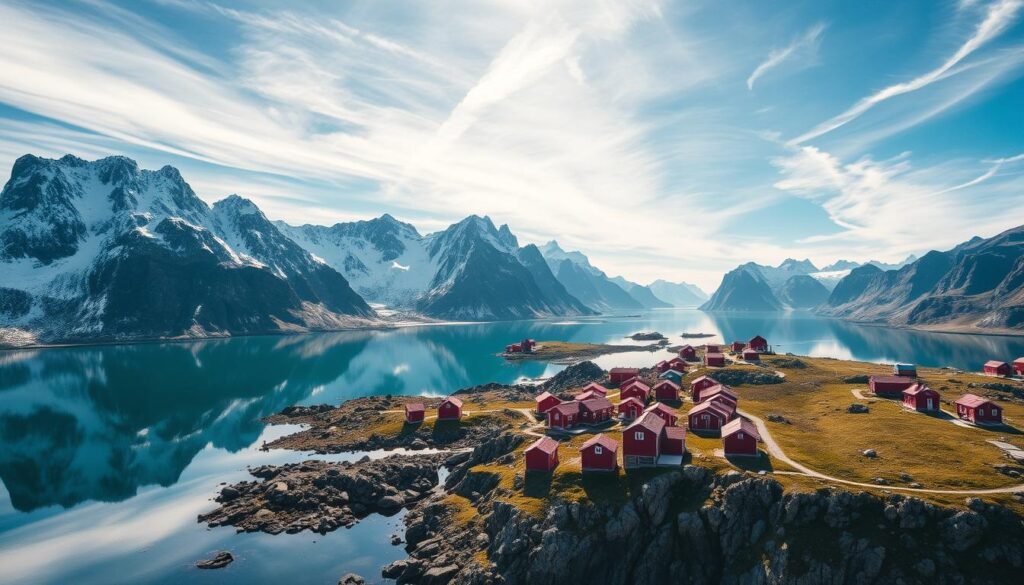
I often stitch remote islands and city hubs into one loop that balances wild scenery and culture. This approach helps me plan days so travel feels varied, not rushed.
Svalbard timing
I time Svalbard between February and September to mix aurora-friendly darkness with long daylight for glacier cruises and wildlife excursions. I prepare for true Arctic weather, layer well, and book licensed guides for snowmobile or boat trips in remote areas.
Lofoten Islands
I save the lofoten islands for summer when ridgeline hikes, sea kayaking, and beach photography thrive under the midnight sun. The lofoten islands offer long golden hours that stretch into the night and superb light for landscape shots.
Grand tours and links
I build a grand tour by pairing Oslo, Stockholm, and Copenhagen via trains and short flights. For northern legs, I connect northern norway—Tromsø or Bodø—by regional flights or coastal cruises so city culture and Arctic coastlines combine smoothly.
- Plan: spread travel days for weather buffers and include a Sami culture stop in the north.
- Tip: choose summer for long light or shoulder months for lower crowds and better rates across the country.
Conclusion
I find the smartest trips start by naming one must-do and arranging months around that plan.
Match activities with daylight and weather: pick summer for long trails and sun-soaked fjords, autumn for color and early lights, winter for snowy festivals and aurora chases, and spring for roaring waterfalls and reopening roads.
Build buffer days for weather and transport, especially in the north, and mix cities with wild landscapes using trains, boats, and a couple of flights.
Seeing both northern lights and midnight sun usually means separate trips. Pick a season, map days to daylight, and you’ll return with memories of Norway’s changing beauty across the year.


